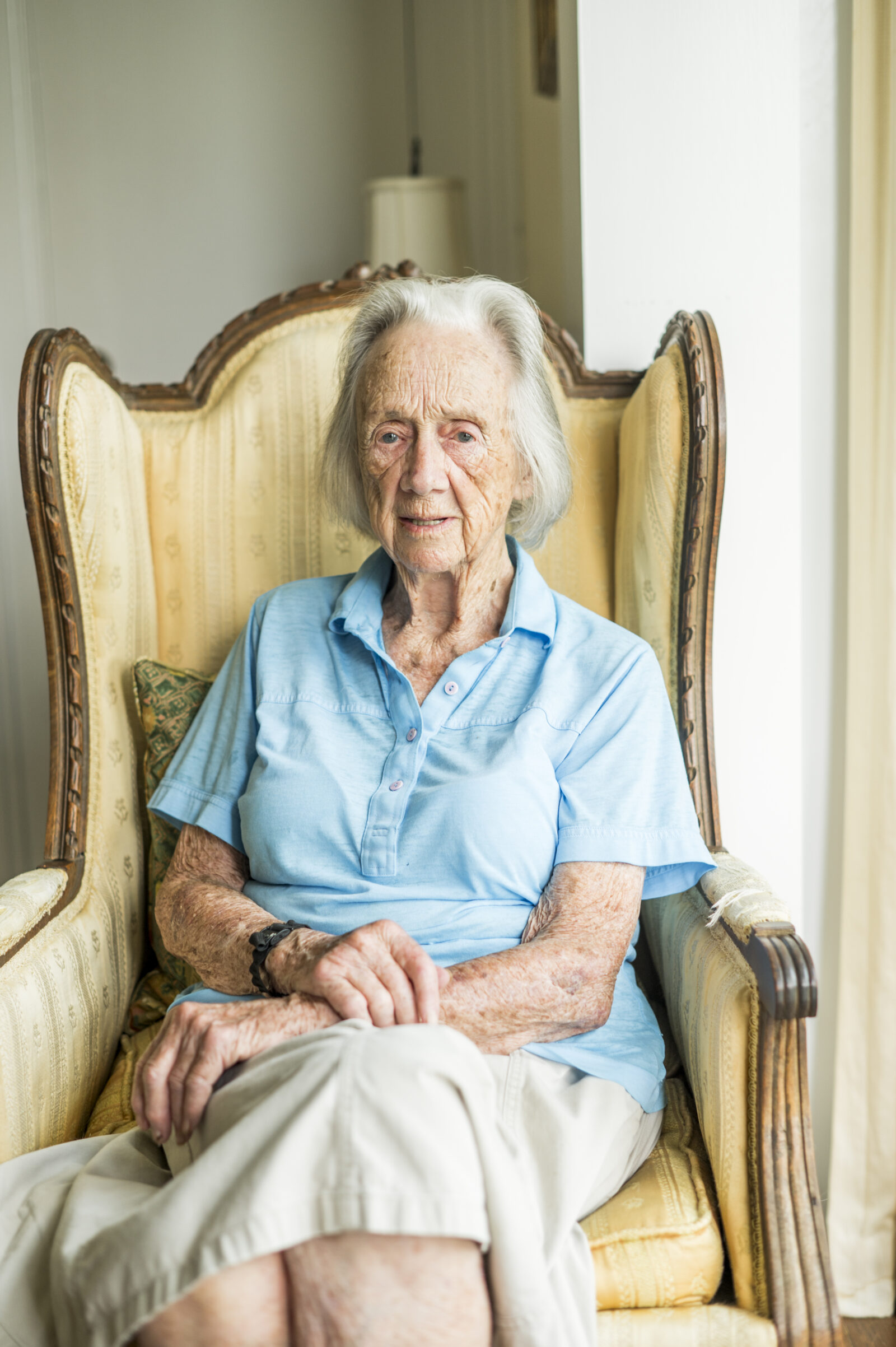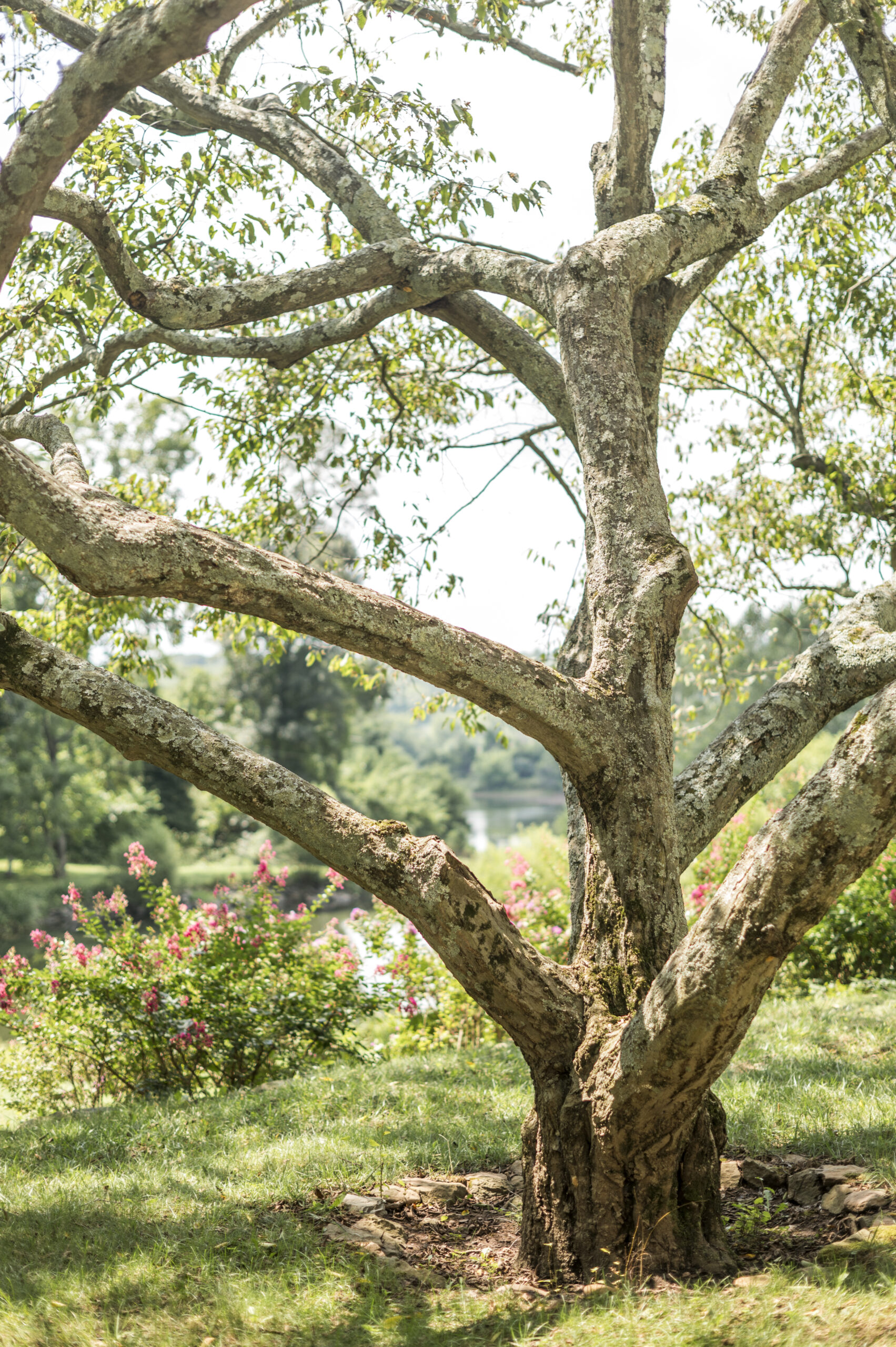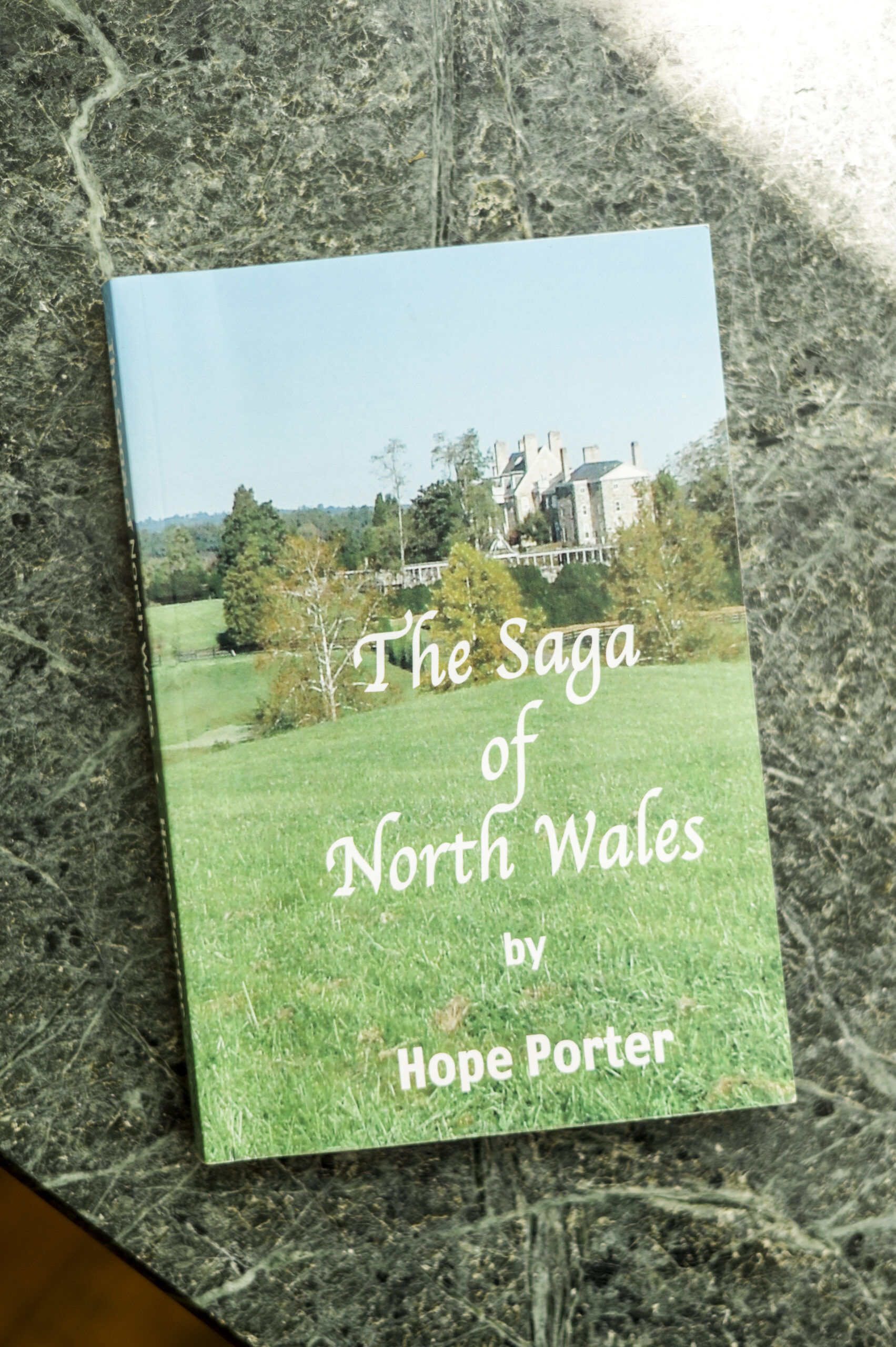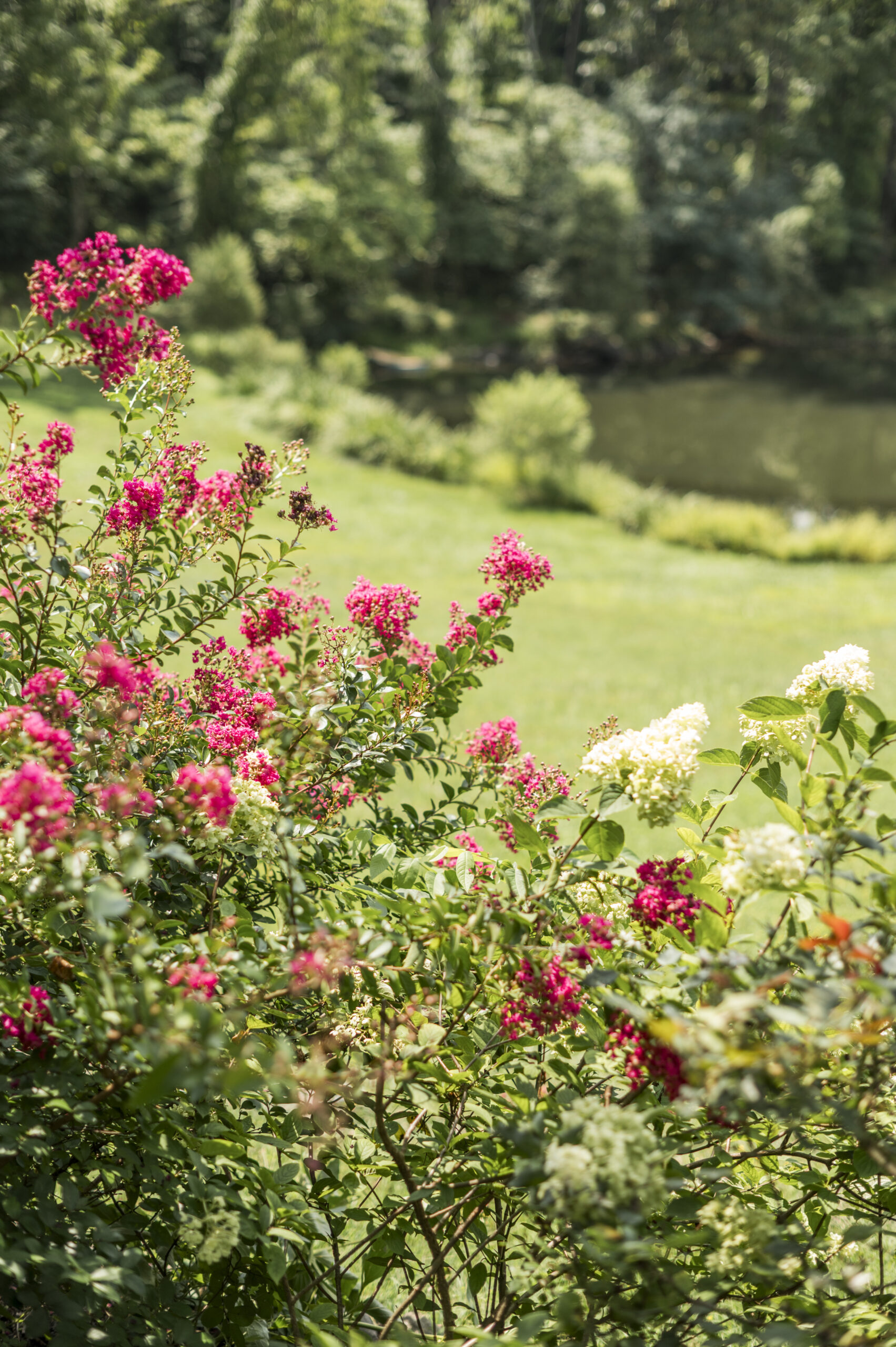Preserving the Piedmont and Celebrating Hope Porter

Written by Heidi Baumstark | Photos by Gracie Savage
Everyone’s drawn to natural beauty.
When that beauty comes in the form of sprawling landscapes, majestic rolling hills, and productive farmland, Fauquier County captivates. Though, with the threat of development encroaching on Hunt Country, Fauquier residents have had to fight to keep the area small, rural, and rich with open spaces.
For most of her long life, Hope Wallach Porter has been part of that fight. As a dedicated preservation activist, she was instrumental in founding Citizens for Fauquier County (CFFC) — established in the spring of 1968 as the Mid-Fauquier Association (MFA) — which holds the distinction of being the oldest preservation-minded organization in the county.
Porter is referred to as the matriarch of the local conservation movement, which includes nonprofits like the Piedmont Environmental Council, Goose Creek Association, Virginia Piedmont Heritage Area Association, Land Trust of Virginia, and Virginia Outdoors Foundation. In December 1989 Porter was named Citizen of the Decade by the Fauquier Times-Democrat, the newspaper writing that “no one has exerted more influence or swayed the course of history in the county over the last quarter of a century.” In supporting editorials, Porter is referred to as “the lady protector of our countryside.”

Over the years, she has garnered support from concerned citizens who helped blow the whistle on the potential for unbridled development in Virginia’s Hunt Country. CFFC’s tagline is “Protecting Fauquier’s Future” and has earned a 56-year track record of doing just that. That Fauquier County is still largely dominated by agriculture and rural vistas is very much a credit to Porter’s legacy.
Hope at Hopefield — Her Childhood Home
As a child, Porter, née Wallach, moved with her family from D.C. to Chestnut Grove (now called Hopefield), a 260-acre farm north of Warrenton with an 1855 late-Federal-style brick house. The Wallachs had been longtime Washingtonians; in fact, Porter’s paternal grandfather — Richard Wallach — was D.C.’s mayor from 1861 to 1868, during the Civil War and Lincoln’s assassination.
It was her mother who chose “Hopefield” as the new name of the family farm, in honor of Hope. They lived there during the Great Depression and relied on raising cattle and growing wheat, corn, and small grains. This experience made Porter acutely aware of the challenges farmers face.
Wake-Up Call: North Wales
For Porter, a self-proclaimed “accidental activist,” her drive to save Fauquier’s farmland began in the late 1960s when an Arkansas-based developer called Cooper Communities purchased a 4,200-acre property called North Wales in Fauquier County. The stone manor house was built circa 1776 and is one of the most historic properties in the Virginia Piedmont. Cooper’s plans included a community of 10,000 homes on the property to house 31,500 residents. At the time, Fauquier County’s entire population was only 26,000. “So, this would have totally exploded the population,” Porter says, “and this was our wake-up call.”

In her 2004 book, “The Saga of North Wales,” she writes that the fate of North Wales “hung in the balance” and everyone said there was “no way you can win this battle.” Against all odds, the small band of citizens that made up CFFC fought to preserve North Wales, the integrity of Fauquier’s master plan, and the county itself. Porter adds, “It’s enormously lucky that it turned out this way before we’ve been nibbled to death.”
Porter’s Battle to Preserve North Wales
In 1945, Porter married Boston native William C. Burrage. Burrage had first experienced Fauquier County from the back of an Army truck, liked what he saw, and decided to return once World War II had ended. He and Porter settled in Fauquier and had two daughters, Anne Douglas Atherton and Feroline Higginson. He served as the director of planning for the Maryland-National Capital Park Planning Commission and eventually became the director of planning for Fairfax County. Realizing that Fauquier was directly in the path of the population expanding from Washington, D.C., he became the chief advocate of preparing to meet that challenge. “Until then, no one had reason to pay much attention to the land, except for farming or fox hunting,” Porter explained in her book. Burrage was concerned that developers would “worm their way onto the Board of Supervisors and Planning Commission, as was happening in other counties, and the County would succumb to suburban sprawl.”
“If I wasn’t married to Bill, I wouldn’t have been so involved,” she says. To get the word out about the threat of development, Porter and a group of concerned citizens published a weekly newspaper from 1971 to 1978 called The Piedmont Virginian.
“I used to deliver the newspapers and drop them off at grocers and little country stores all over the county,” Porter remembers. In its final issue in March 1978, The Piedmont Virginian stated, “It is fair to say that this paper has helped stimulate public awareness of the ‘growth’ issues which continue to pressure this area of Virginia, but whether that awareness will be translated into meaningful action remains to be seen.”
The battle over North Wales continued until 1997 when Michael V. Prentiss and his wife, Patricia, purchased the remaining 1,471 acres, including the stone manor house and its outbuildings. Through the Virginia Outdoors Foundation, the Prentisses placed the strongest possible easement on the property with specifications that no other structures could be built. On June 29, 1999, it was added to the National Register of Historic Places.
For the preservation of North Wales, Porter gives much credit to her first husband, Bill Burrage, along with a number of strategists and fundraisers, including S. Prentice Porter (whom she married after Burrage’s death), Francis Greene, and George Ohrstrom, who helped found the Piedmont Environmental Council in 1972; John T. “Til” Hazel Jr., a local land-use attorney and developer; and Bill Backer, an advertising executive who created newspaper ads supporting preservation. Ultimately, after a decades-long dispute, development of North Wales was stopped. Porter adds, “It definitely took out a period of our lives.”
Years Following North Wales’ Preservation — Porter’s Legacy
For over 56 years, CFFC has been the guardian of Fauquier’s controlled growth and rural, agricultural character. Today, the nonprofit is led by President Kevin Ramundo, of Upperville. Ramundo describes Porter’s impact as a boon to preservation, education, and awareness.
“That’s been the impact [of CFFC], the notion that we can protect this place,” he says. “With that awareness and vision over the years, people began to think differently; there’s a whole generation of folks who decided to commit themselves to preservation. Hope was a tremendous role model, and quite feisty. … I have a tremendous amount of gratitude for her.”

“Bottom line,” Ramundo concludes, “if we’re going to carry on Hope’s legacy, we need to be a more robust organization. We’ve added new board members who have given us the capacity to do more and continue the work Hope started 50 years ago.” CFFC’s board is committed to building their membership base and inspiring the next generation of conservationists to follow in Porter’s footsteps.
Porter reflects, “I’ve had 100 wonderful years in Fauquier. We’ve fought hard, and it’s been a worthwhile fight to keep this area the special place that it is.”
On September 25, 2024, Porter turns 100 years old. To celebrate, CFFC is hosting a party on September 29 at 4 p.m. at Highland School in Warrenton. The party will include the public premiere of an inspiring video featuring Porter’s early conservation efforts. There will also be music and storytelling by Bess Putnam, who grew up in Fauquier County and has been performing locally over the years paying tribute to the county’s history and culture. For more information on this ticketed event, visit citizensforfauquier.org/events. ML
Learn more about supporting CFFC and opportunities to become a member or make a donation at citizensforfauquier.org.
Published in the September 2024 issue of Middleburg Life.








